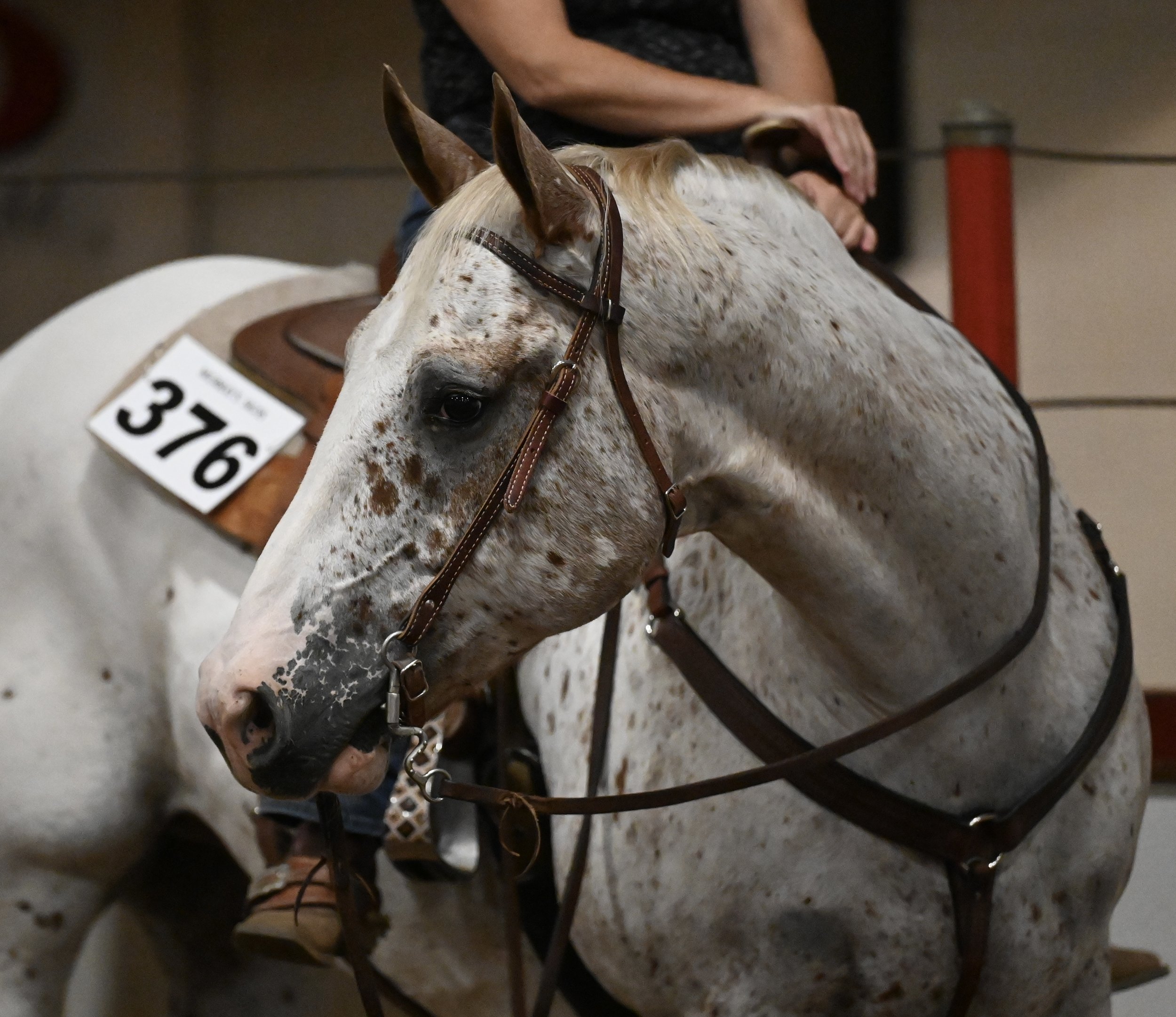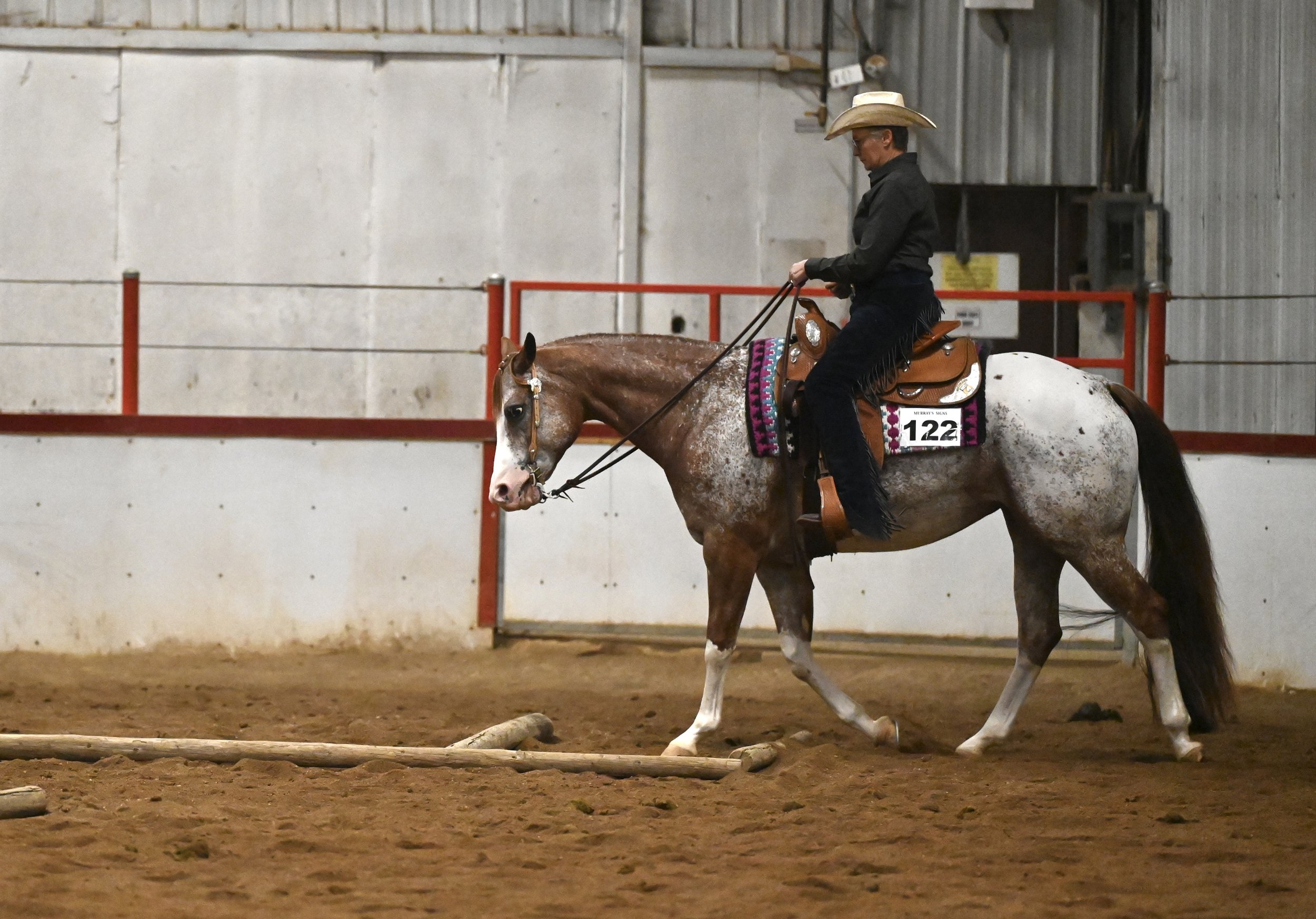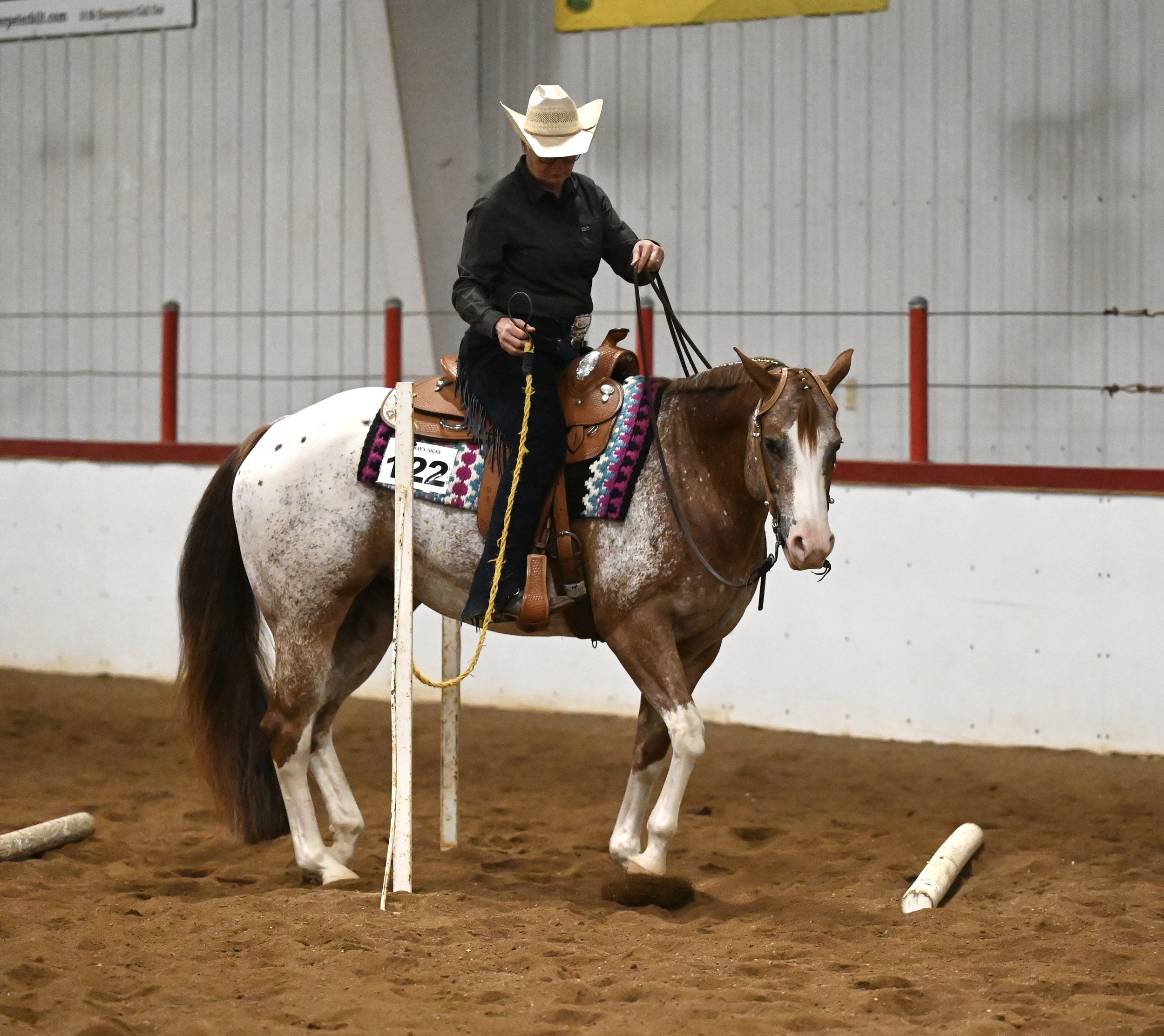Appaloosa Horses Much More Than Black And White
We take a look at the majestic Appaloosa horse and it’s history. We find out it more than what we stereotypically think of the breed.
By Robert Thomas
When we think about the Appaloosa breed of horse, most of us think of the stereotypical horse with mostly solid colours of front and a spotted colouration on their rear.
It’s also the horse popularized in black and white “Cowboys and Indians” films where the US cavalry rode Quarter Horses and the Indigenous people rode Appaloosa horses.
But like most stereotypes when it comes to the Appaloosa horse this is 100 percent untrue.
Appaloosa’s True Colours
Although many Appaloosa horses are spotted this is not what all Appaloosa horses look like. It’s only part of the breed.
“They can come out with multiple different colours and coats,” Bobbi Reeves president of the Saskatchewan Appaloosa Horse Club and chair of this past weekend’s show told MJ Independent.
“The coat pattern is genetic. It is passed on through the genetics of the horse. There are other characteristics such as model skin. Which sort of looks like black and white puzzle pieces which you can see around their muzzle and around their nose, under their tail or around their eyes,” she said.
“A striped hoof on a dark leg is also another Appaloosa characteristic that no other horse would have,” she said, a white circle that goes around the eyeball along with the coat pattern are all characteristics of the breed.
The stereotypical portrait of the breed is the blanket on the hips and spots on the blanket but it does not define the breed.
It all has to deal with origins and what the Appaloosa horse was initially bred for, Reeves said.
True Origins Of The Appaloosa
“The original breeders of the Appaloosa horse was the Nez Perce people,” she said, adding “they were the first horse to be selectively bred in North America.
The Appaloosa horse was bred as a working horse by the Nez Perce for speed, agility, trainability and toughness for such things as the buffalo hunt and going to war.
“It was their usability in herding buffalo and chasing buffalo that was so unique and strength and their durability,” she said that made the appaloosa so important to the Nez Perce way of life.
The Nez Perce would see US Military take away the Nez Perce’s strength and identity in about 1877.
The tribe - located in approximately today’s Idaho - scattered with some members and their horses making it to Canada.
This is where the breed made its largest entry to Canada and what many Appaloosa horses trace their heritage back to.
“They were working horses (for native peoples),” she said.
The Appaloosa is largely a colour breed but Reeves said two pure blooded leopard Appaloosa - spotted from head to hoof - could be bred resulting in a horse with a solid colour and no spots.
Solid colours in Appaloosa horses also can occur when they are crossed with quarter horses.
The Appaloosa and Quarter Horse are seen as the two American bred horses used for working in the herding of cattle in the American West.
Although the conventional origins of the breed were said to be descendants of the horses brought to North America by the Spanish Reeves said there is now archaeological findings the breed may pre-date the Spanish.
The descendants of the Appaloosa may have travelled across the land bridge which existed between Asia and North America.
It’s a similar journey of the buffalo whose ancestors were much larger and roamed in large parts of today’s Siberia and beyond.
In more modern times the Nez Perce saw their horses as their source of power and independence as such the US Army sought to take them away. The Nez Perce people fled with some of them arriving in Canada with their horses.
The foundation of today’s Appaloosa horse in Canada.
In the United States there is the annual Chief Joseph trail ride that follows the trail of the Nez Perce as they were fleeing the US cavalry.
“They were a powerful nation because of their pride in their horses so the US cavalry was trying to take their horses away in order to break them. They wanted to break the pride and spirit of the Nez Perce,” Reeves said.
For Appaloosa horses the name of many games are tied back to honour the indigenous peoples and roots of the breed.
What most people call barrel racing in the Appaloosa context is called a camas prairie stump racing. Pole bending is called the Nez Perce stake race.
“Because those were races they liked to do and played in their celebrations,” Reeves said.
Reeves Love For Appaloosa Horses
For Reeves her involvement with Appaloosa horses is part nostalgic.
“When I was a child the first horse I bought was an Appaloosa. And I just fell in love with the horse. I went on to breed and show other breeds but I gravitated back to the Appaloosa. I like the horses. I like the people,” she said.
Reeves described the people involved with Appaloosa horses as knowing each other to the point they are a “family” built around an appreciation of the breed.
Weekend Event In Moose Jaw
This past weekend’s Saskatchewan Appaloosa Association show in Moose Jaw showcased the traits the Nez Perce bred into the horses through a series of class competitions.
“There was a variety of classes from in hand classes where you show your horses for their confirmation and their build and their colour,” she said.
There was also riding classes in English tack and Western tack.
The Appaloosa group is also one of the few horse groups that employ time in many classes as part of final scores.
Part of the classes on display is called Trail where they worked in what the Appaloosa would face while working with and herding cattle.
It entailed opening and closing a gate while on horseback and at the same time blocking the gate opening simulating working cattle to prevent them from escaping.
“Those are the types of obstacles you would come across if you were out riding on the trail. You might have to open a gate, you might have to walk over a bridge, you might have to walk around some logs or over some logs. You might have to canter or trot.”
This is the Saskatchewan Appaloosa Association’s second show since the repeal of COVID - 19 health protocols and slowly people are starting to come back to the show.
“We’ve had a slow recovery after COVID. A lot of people now are just starting to feel safe.”
This weekend’s show had 38 horses. It’s up from last year but in the past more horses and riders have attended.
Other factors that effect turnout are higher fuel prices and the cost of living - many other horse events have experienced similar slow recoveries post-COVID restrictions largely due to inflation and fuel prices.
Bringing in competent and accredited judges is a growing expense to maintain the show’s accreditation with the breed’s governing body the Appaloosa Horse Club Incorporated.
By being an accredited show, it allows competitors a Moose Jaw to move on to higher events such as the overall championships being held in the United States. There are eight competitors coming out of the Moose Jaw Shaw, who qualify to compete at a higher level.
Reeves though remains optimistic and positive on the show and the Appaloosa horses future history.
People are starting to come back with every show and outing.
“People are still involved with the breed. This is not required it’s a bonus activity. We’re finding our members are just starting to come out and get involved again.”








